#sinagoga del tránsito
Text

Cerca Sinagoga del Tránsito. Toledo. Abril ‘24🇪🇸
3 notes
·
View notes
Text
*UNA PALABRA PARA VIVIR*
Aprende a ver las faltas como un tránsito en la verdad, no veas su forma, más bien ve a la cima con una buena actitud de acción, para crear una reacción.
_Andar como es digno del Señor, para agradarle en todo…_ *Colosenses 1:10*
*_Esa manera es la fe, y el amor incondicional hace que su fe funcione_* *(Hebreos 11:6, Gálatas 5:6).*
*_El otro día, estaba intentando unir dos tablas viejas de 2x4 con un clavo galvanizado de calibre 16. Como la madera era vieja, se había vuelto muy dura. Cada vez que intentaba clavar, el clavo se doblaba y tenía que empezar de nuevo con un clavo nuevo. Después de unos cuatro o cinco intentos, saqué mi barreno_* (taladro) *_eléctrico y taladré cinco agujeros con un poco más pequeño que el clavo. El clavo finalmente penetró recto en las tablas, asegurándolas._*
_*Esto va a sonar redundante si sigues estos UPPV diariamente, pero a veces tiene que seguir golpeando los clavos de la Palabra de Dios para que llegue directamente a un corazón viejo y duro.*_
*_Hay tres cosas que puede hacer para mantenerse en el amor incondicional que hará que su fe funcione._*
*Reciba las promesas de la Palabra de Dios en su corazón. Diga esas promesas con su boca e ignore todo lo que no esté cubierto en ellas. Salmo 119:160* dice: _“La totalidad de tu palabra es verdad, y cada uno de tus justos juicios permanece para siempre”._
_*No es una verdad, es La Verdad. Si Dios lo prometió en Su Palabra* (la Biblia), *no desaparecerá debido a alguna maldad creada por el diablo.*
_*Su vida está apartada del mundo debido a La Verdad de la Palabra de Dios.*_ Jesús dijo en *Juan 17:17* _“Santifícalos en Tu verdad. Tu palabra es VERDAD”._
*Introduzca la Palabra de Dios en su espíritu, incluso si primero tiene que perforar un agujero en esa cosa vieja y dura para hacerle un espacio.*
Más adelante hablaré más sobre la importancia de hablar la Palabra de Dios y Sus preceptos de su boca, pero todo lo que necesita saber ahora es *Proverbios 18:21:* _“La muerte y la vida están en poder de la lengua, y los que la aman comerán de su fruto”._ _*Las palabras que salen de nuestro espíritu importan. Producen frutos en su vida.*_ *Marcos 5* es la historia de la resurrección de la hija de Jairo de entre los muertos *(Marcos 5:22-43).* _Camino a casa de Jairo, algunos de sus amigos los detuvieron y les dijeron: “Tu hija ha muerto; ¿Por qué molestar más al maestro?_ En el *versículo 36* dice: _“Pero Jesús, oyendo, pero ignorando lo que se decía, dijo al oficial de la sinagoga: 'No temas, cree solamente'”._ No estoy diciendo que niegue una verdad. Jesús no dijo: "Ella no está muerta". *_Él dijo: "¡No dejes de creer!" y sige avanzando hacia La Verdad._* *Si tuviera un quetzal por cada vez que lastimaron mis sentimientos y dijera: "No me importa lo que digan o hagan, camino en el amor de Dios porque sé que Él me ama", sería un hombre rico.*
_*¡Escúcheme, escúcheme! ¡ESCÚCHEME! Todo es posible para el que cree. Puede caminar en amor incondicional. No se basa en sus sentimientos, se basa en su fe en Dios y ese amor incondicional es lo que hace que su fe funcione.* _https://orientacioneducacionaldocentespa.negocio.site/?utm_source=gmb&utm_medium=referral
1 note
·
View note
Link
0 notes
Text
¿Cuál es la mejor sinagoga de Toledo?

¿Cuál es la mejor sinagoga de Toledo?
¿Cómo se llama la sinagoga de Toledo?
¿Por qué se llama Sinagoga del Tránsito?
¿Quién construyó la Sinagoga del Tránsito?
https://youtu.be/EJQ4j-ueac0
0 notes
Photo

at Sinagoga del Tránsito https://www.instagram.com/p/CnpQC_bPQMJ/?igshid=NGJjMDIxMWI=
0 notes
Photo

El techo de la Sinagoga del Tránsito, Toledo. Castilla y La Mancha, España 🇪🇦 . . #fushoots #letsguide #localguides #spain🇪🇸 #spaintravel #picoftheday #travelingourplanet #travelphotography #españa #natgeotravel #natgeoyourshot #toledo #castillaylamancha #sinagogadeltránsito #sinagoga (en Sinagoga del Tránsito) https://www.instagram.com/p/CjVqIxiDzYA/?igshid=NGJjMDIxMWI=
#fushoots#letsguide#localguides#spain🇪🇸#spaintravel#picoftheday#travelingourplanet#travelphotography#españa#natgeotravel#natgeoyourshot#toledo#castillaylamancha#sinagogadeltránsito#sinagoga
0 notes
Photo


Toledo, 11 de Fevereiro de Ano 1 - Domingo. Blogger - 25 anos. Take.
08:00 - Acordamos, tomamos banho e nos arrumamos.
08:40 - Tomamos café no hotel.

09:20 - Vamos ao museu:
Museo del Greco


10:00 - Outro:
Sinagoga del Tránsito




10:30 - Outro museu:
Museo Victorio Macho




11:20 - Ficamos no parque relaxando:
Paseo del Tránsito (Parque)
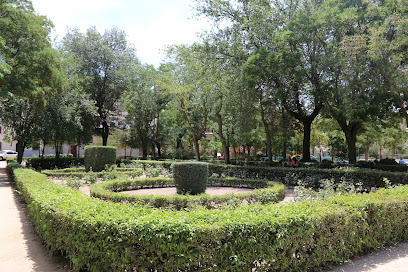

12:00 - Almoçamos:
GastroArt Toledo
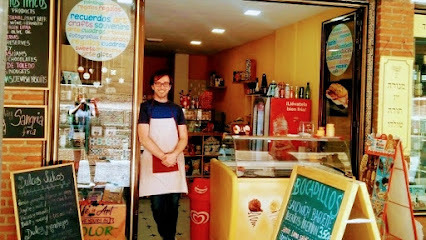


13:00 - Ficamos relaxando e tomando café na vista.


13:30 - Voltamos para casa.
13:40 - Tiramos uma boa soneca.
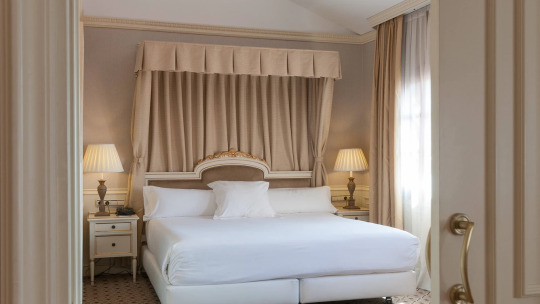
16:00 - Acordamos e tomamos café da tarde:



17:00 - Depois de conversarmos, tomamos banho e nos arrumamos para sair.
17:40 - Ficamos bebendo de leve.

19:00 - Saímos para jantar.
19:10 - Jantamos:
Majazul
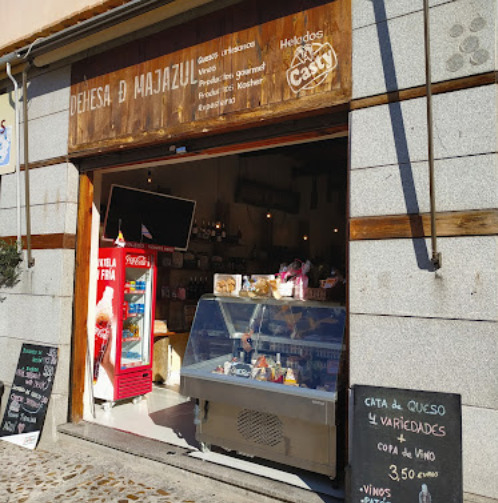


20:30 - Vamos para casa e dormimos (L).
0 notes
Text

Federico García Lorca, Luis Buñuel, Salvador Dalí & Pepín Bello + La Orden de Toledo (Parte 10)
Vagar durante toda una noche por
Toledo, borracho y en completa soledad.
No lavarse durante la estancia.
Acudir a la ciudad una vez al año.
Amar a Toledo por encima de todas las cosas.
Velar el sepulcro del Cardenal Tavera
(Wander for a whole night through Toledo,
drunk and in complete solitude.
Do not wash during these days
Go to the city once a year
Love Toledo above all things.
Watch over the tomb of Cardinal Tavera)
Comíamos casi siempre en tascas, como la Venta de Aires, donde siempre pedíamos tortilla a caballo (con carnes de cerdo) y una perdiz y vino blanco de Yepes.
(We almost always ate in taverns, like Venta de Aires, where we always asked for a tortilla on horseback (with pork) and a partridge and white wine from Yepes.)
》 Hubo un dibujo de Dalí, formidable, en la pared, a lápiz: todos los Hermanos de la Orden de Toledo. Allí duró bastantes años, después lo encalaron y lo borraron. Rafael Alberti sobre la Venta de Aires. Conversaciones con Buñuel. Max Aub
(There was a formidable drawing by Dalí on the wall, in pencil: all the Brothers of the Order of Toledo. It lasted there for many years, then they whitewashed it and erased it)
》 A Buñuel, como a Lorca y a Dalí, le habían fascinado desde su infancia los disfraces, y el entusiasmo de la comparsa en este sentido era contagioso. Los miembros de la orden se paseaban por Toledo en los más estrafalarios y, a veces, escandalosos atuendos. Buñuel daba rienda suelta a su necesidad compulsiva de disfrazarse de cura…. La vida desaforada de Salvador Dalí. Ian Gibson.
(Buñuel, like Lorca and Dalí, had been fascinated by costumes since childhood, and the troupe's enthusiasm for this was contagious. Members of the order paraded around Toledo in the most outlandish and sometimes outrageous outfits. Buñuel gave free rein to his compulsive need to disguise himself as a priest….)
》 Para ellos era un lugar de peregrinaje sagrado, pero no de manera religiosa. Las razones de esa pasión por Toledo no las he llegado a entender del todo. Quizás fue la mezcla de pueblos, culturas e imágenes que uno se encontraba. Claude Carrière
(For them it was a sacred place of pilgrimage, but not in a religious way. I have not fully understood the reasons for that passion for Toledo. Perhaps it was the mixture of peoples, cultures and images that can be found)
》 Le recordaba yo a Buñuel aquellas fantasmagóricas noches toledanas, como también algunas de sus feroces bromas, entre otras, la de lanzar, a la madrugada, grandes cubos de agua bajo la puerta de las celdas donde dormían Federico, Pepín Bello o Dalí… ¡Tiempos gloriosos en la Residencia madrileña de Estudiantes!
<< ¡Chico! -me interrumpió, entusiasmado, atenta la mirada, con esa expresión fija, escrutadora, de los sordos- ¡Qué maravilla que me estés recordando ahora todo eso después de más de 50 años! ¡Qué bueno! No nos hemos renovado en nada. Seguimos hablando de lo mismo.>>
<< Es verdad, Luis. Tienes razón. No nos hemos renovado en nada. Aquellos maravillosos años circulan aún por nuestras venas, fecundándonos, cegándonos con deslumbrador recuerdo. >> Rafael Alberti
(I reminded Buñuel of those phantasmagorical nights in Toledo, as well as some of his ferocious pranks, among others, that of throwing, at dawn, large buckets of water under the door of the cells where Federico, Pepín Bello or Dalí slept... glorious in the Madrid Student Residence!
<< Boy! -he interrupted me, enthusiastic, his gaze attentive, with that fixed, scrutinizing expression of the deaf- How wonderful that you are now reminding me of all that after more than 50 years! Excellent! We have not renewed anything. We keep talking about the same thing.>>
<< It's true, Luis. You are right. We have not renewed anything. Those wonderful years still circulate through our veins, fertilizing us, blinding us with dazzling memories. >>)
#la orden de toledo#salvador dalí#federico garcía lorca#luis buñuel#rafael alberti#1920s & 1930s#maria luisa gonzález#juan vicens#josé moreno villa#josé maría hinojosa#posada de la hermandad#venta de aires#santo domingo el real#alcázar de toledo#sinagoga del tránsito#catedral primada#calle chapinería#moodboard#emdt#ángel ruiz#secún de la rosa#enrique alcides#el ministerio del tiempo#mdt#los caballeros de la orden de toledo#conversaciones con buñuel#max aub#la vida desaforada de salvador dalí#ian gibson#claude carrière
11 notes
·
View notes
Photo




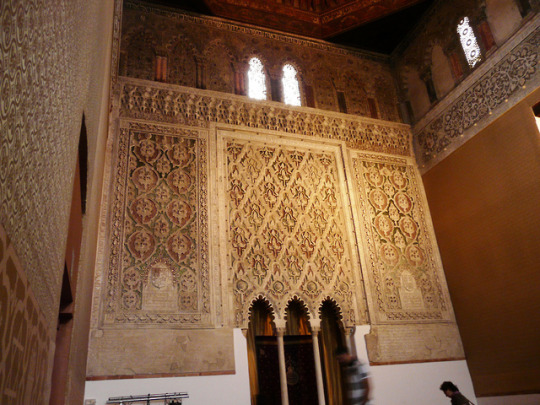

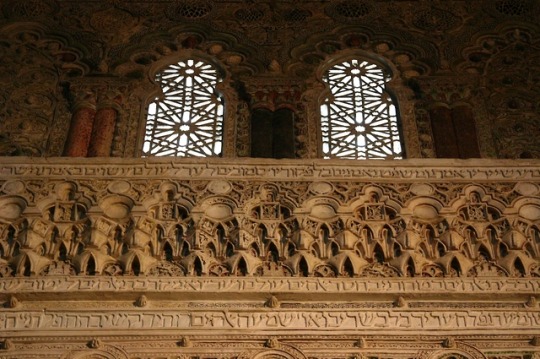

Synagogue of El Tránsito, Toledo, Spain. The synagogue was built in about 1356 by Samuel ha-Levi Abulafia, Treasurer to ruler Peter of Castile, and is famous for its rich, elaborate stucco decoration in the Mudéjar style, which bears comparison with the Alcazar of Seville, and the Alhambra in Granada.
In 1492, after the expulsion of the Jew from Spain by royal decree, the Synagogue came under the Order of Calatrava, who converted the building into a church serving a priory dedicated to Saint Benedict. In the 17th century the church's name was changed to Nuestra Señora del Tránsito, derived from the painting “Transit of the Virgin” by Juan Correa de Vivar, which is housed there. During the Napoleonic Wars it was also used as a military headquarters.
In 1877 the building became a national monument, and in 1910 the building was made into a museum, and now operates as the Sephardi Museum of Toledo, and is open to the public.
Photo sources: x, x, x, x, x, x
#Synagogue of El Transito#Sinagoga del Tránsito#Toledo#Spain#mudejar#architecture#14th century#Moorish Spain#historical#world
2 notes
·
View notes
Text





Sinagoga del Tránsito, Toledo España
314 notes
·
View notes
Video
youtube
ANA ALCAIDE: DURME DURME- Sinagoga del Tránsito de Toledo
2 notes
·
View notes
Photo





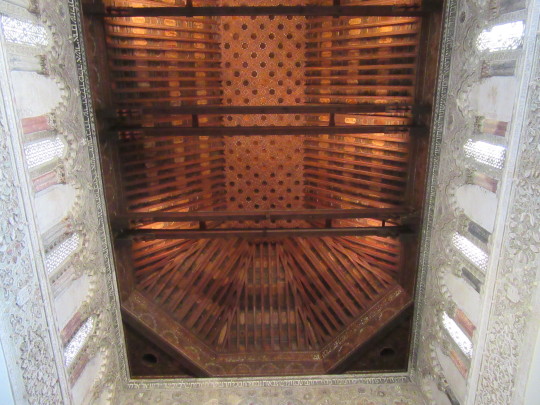




Pictures 1, 2, & 3: Synagogue, Cordoba, Andalusia
Pictures 4, 5, & 6: Sinagoga del Tránsito, Toledo, Castile–La Mancha
Pictures 7 & 8: Ibn Shushan Synagogue, Toledo, Castile–La Mancha
Pictures 9 & 10: Sinagoga Major de Barcelona, Barcelona, Catalonia
These are four of the oldest synagogues in Spain; the Barcelona synagogue is the oldest, and close to the oldest in Europe. They are also four of the five pre-expulsion (1492) synagogues in Spain. All the rest were destroyed.
None, today, functions as a synagogue; the building in Barcelona spent time as a warehouse before being rediscovered in 1995. The synagogue in Cordoba is today an exhibition, but after the expulsion turned into a hospital for people with rabies. Both of the synagogues in Toledo were used as churches; the Sinagoga del Tránsito is today part of a museum on the Sephardim, while the Ibn Shushan Synagogue is owned by the Catholic Church, who have a Jewish conversion group on site.
In order of my visits:
The synagogue in Cordoba is a small building, almost certainly used by a private family, and built in 1315. There is a nominal entrance fee, which I avoided by entering at the same time as a tour group. There is minimal signage and no presentation of artifacts. But it works. It is a simple, moving building, and I cried.
Sinagoga del Tránsito is a very nicely done museum. It is an exquisitely decorated shul, behind which are three or four rooms with artifacts and (mostly Spanish) signs explaining the history. Entry was nominal, although it was reduced as I was a student. Again the experience was lovely, and stunning. I cannot express what it means to stand there surrounded by that incredible beauty, and think about my spiritual ancestors doing the same, and praying for peace.
Ibn Shushan Synagogue again is currently owned by the Catholic Church, which charges 3€ entry. It is run by the Fraternity María Estrella de la Mañana, an organization which does outreach and conversion efforts towards Jews. I did not punch them but it took some effort. The synagogue itself still, as can be seen, has a crucifix hanging from the dome and there are no signs. It’s impossible to tell which aspects of the architecture are original (or pre-expulsion, at least, as this synagogue dates to 1180 and was adapted several times) and which are Christian. I was furious.
The synagogue in Barcelona is the least well preserved--largely all that remains are the foundations. Today it is a two room museum/memorial/shop, very respectfully done, with a number of donated artifacts--including a 500 year old (treif) Torah scroll purchased from a bazaar in Morocco. It is also by far the oldest synagogue in Iberia, or much of Europe: The others are all from the time of the Reconquista, but this one dates back to the 3rd or 4th century CE. (In fairness, documentation of its use as a synagogue doesn’t begin until the Reconquista either. But on the other hand, it is not aligned with the street, and is aligned with Jerusalem.) I remember there being an entry fee but not what it was, and also that the workers were very knowledgeable and polite.
In all, a sobering experience.
2 notes
·
View notes
Video
youtube
ANA ALCAIDE: HIXA MÍA- Sinagoga del Tránsito de Toledo
3 notes
·
View notes
Text
Feliz tú y feliz tu suerte
Feliz tú y feliz tu suerte
Clic descargar presentación
¡Feliz tú y feliz tu suerte!
Porque has multiplicado tu caridad y justicia,
y has acumulado provisiones para tu viaje.
Por la destreza de tus acciones,
y por la rectitud de tus bondades y tus obras,
toma amplio sitio en tu jardín de delicias,
bajo las alas de tu Roca.
Porque Él es tu Señor,
y al final de los tiempos te resucitará
para pagar la retribución de tu trabajo,
View On WordPress
0 notes
Text
2.2 Toledo Day Trip

Toledo is a shining example of not only the multifaceted culture and history of Spain but also coexistence. The origins of the city of Toledo start in II century B.C., at which time it would have been known as Toletum, a word deriving from Latin meaning “high place.” Being that this city was founded by the Romans over 2200 years ago, protection from outsiders was high priority. Luckily el río Tajo, or the Tagus river, gave natural protection to the eastern, southern and western borders of the city, which meant a fortress was only necessary for the northern side of the city. The source of the river is found 255 km (158 mi) east of Toledo called Fuente García and in total runs 1,007 km (626 mi) to Lisbon, Portugal where it empties into the Atlantic Ocean. This makes it the longest river in all the Iberian Peninsula and is used for hydro-electric power and commerce. The Tagus River would eventually be the downfall of Toledo for a few centuries but I’ll get to that later. The city layout of Toledo is a labyrinth, much like that of Segovia, and was specifically intended to confuse outsiders as to make invasion a near impossible task. In addition to being designed to confuse, it was also designed to provide protection from the sun, so finding shade throughout the city is a piece of cake— great for me because I burn too easily.

From roughly the IV century until the VIII century Toledo was the capital of the entire Iberian Peninsula, which was ruled by the Romans until the Moors took rule in 711. When the city was in Islamic control the name changed from Toletum to طليطلة (tulaytila) and the Iberian Peninsula was referred to as الأندلس (Al-andalus), which is where the name Andaluz derrives from. The moorish reign lasted from the VIII century up until 1085 when King Alfonso VI reconquered the city from the Moors. Surprisingly, Alfonso VI was very level headed and did not reclaim the city by means of war, rather through the signing of agreements. This allowed for the Jews, Christians and Muslims to live in harmony with one another in a time known as the Golden Era. This is why the Spanish refer to Toledo as the city of three cultures/the city of tolerance. Our class readings clued us in on how the Arabic script we found adorned in the synagogues and cathedrals was an example of this cultural tolerance and the melting pot Toledo once was. The Mudéjar architecture that we saw on the ceilings of Santa Iglesia Catedral Primada de Toledo (Primate Cathedral of Saint Mary of Toledo) and La Sinagoga del Tránsito (the Synagogue of Transit) were adored by both Christians and Jews. Much like people are starting to do with tattoos nowadays, the Arabic script was often times used as decoration rather than for meaning.

Sadly the Golden Era didn’t last forever; the year 1492 marked the end of the age of religious and cultural tolerance when Granada— the last Moorish stronghold in the south of Spain— fell into Spanish rule. The Jews and Muslims living in Toledo were forced to either convert to Catholicism or flee. Our tour guide told us that some of the Jews that fled the city had kept the key to their house and passed it down through the generations, in hopes that one day they may return to what they knew as home. Because the Jews were some of the first people to inhabit the land, the city of Toledo has recently tried to make amends by granting them Spanish citizenship if they can prove their ancestry and pass a citizenship test.

Because Toledo only has an area of 5 sq. km (roughly 2 sq. mi) King Felipe II decided move the capital to Madrid in 1561 because the city couldn’t expand any further due to its river and wall. This caused the city to be abandoned as all the royals, nobles and anyone with money living in Toledo at the time went to live in Madrid. Without the city having been abandoned, it is likely that Toledo wouldn’t be as well preserved as it is today, so in a way while its geography kept and drove people out, it in return ensured its longevity. Even today there are measures taken to ensure the preservation of this millennia-old city, such as being a UNSECO protected site. Nowadays people moving out of Toledo is no longer a problem as the population has been steadily rising, nearly quadrupling in the past century reaching roughly 85,000 inhabitants.

Beyond the religious and architectural history, Toledo is also home to two of Spain’s biggest icons: Domenikos “El Greco” Theotokopoulos and Don Quijote de la Mancha. Don Quijote is the protagonist in the most infamous Spanish book with the same title as his name. Quijote is known as the first nobleman. Outside of one of the religious centers we went to, there was a polyglot reciting passages from Don Quijote in Spanish, English, French, Italian and Catalan to whomever would listen along the Route of Don Quijote. El Greco on the other hand is the only XVI century painter that has the privilege of being relevant in today’s culture. Although Greek by birth, he is considered Spanish by Spaniards themselves as he spent the majority of his life in Spain. We had the privilege of seeing one of his masterpieces in Iglesia de Santo Tomé called El enterramiento del conde de Orgaz, or The Burial of Count Orgaz. The story behind the painting is that two saints miraculously came down to heaven to bury Count Orgaz himself after living such a pure and honorable life.
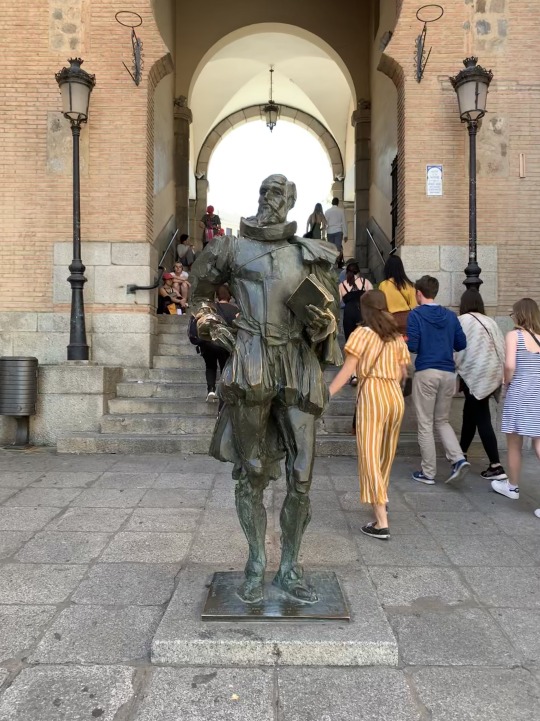
It was certainly a long and overwhelming day with more than enough information to process. Toledo really gave me a look into the history of Spain and I could definitely see myself going back when I return to Spain sometime in the future.
1 note
·
View note
Text
Qué ver en Toledo
Toledo, encantadora por su singular ubicación, sube por un promontorio rodeada de las aguas del Tajo, atractivo por su aspecto medieval que le confiere un encanto incomparable, famoso por sus monumentos como la Catedral y el Alcázar.
Pero Toledo va más allá de sus iconos más famosos, es una ciudad en la que poco a poco se descubre lo que no se espera encontrar y es considerada con razón como un auténtico museo al aire libre, donde las diferentes civilizaciones, la cristiana, la árabe y la judía, han hecho historia conviviendo en armonía.
Lo primero que hay que hacer para orientarse por el casco antiguo es cerrar el mapa; es mucho mejor perderse en el laberinto de calles empedradas y sinuosas, tan estrechas que parecen pasadizos cubiertos, con los tejados de las casas casi tocándose entre sí.
Descubriendo lugares inesperados y poco conocidos en Aranjuez y Toledo tour de un día, deambulando sin rumbo; sin embargo, no importa donde termines, está el omnipresente campanario de la Catedral para actuar como brújula e indicar el centro. Encontrarás rincones fascinantes, puertas de entrada triunfales, fortificaciones moriscas, infinidad de iglesias, campanarios que parecen minaretes, palacios y conventos hasta el punto de que ni siquiera puedes distinguirlos en las guías.
Sube las escaleras hasta llegar al punto en el que a lo lejos se encuentra la imponente e inconfundible silueta del Alcázar, detente en las terrazas que te permiten apreciar la hermosa vista de la interminable campiña de un lado y un profundo desfiladero del otro, cuenta la leyenda que fue dibujada por Hércules con la punta de la espada, pero que en realidad es el resultado de lo que el río Tajo, que rodea Toledo por dos tercios, ha tallado a lo largo de los milenios.
Fue durante la dominación árabe cuando la ciudad experimentó su mayor esplendor, así como un período de tolerancia religiosa que permitió a musulmanes, judíos y cristianos convivir pacíficamente. Hay varios edificios en memoria de aquella época de prosperidad y convivencia religiosa como la Mezquita Cristo de la Luz y las Sinagogas del Tránsito y Santa María la Blanca, ahora en fuerte contraste con los edificios del catolicismo.
1 note
·
View note